Measurements of Cumulants of Net-Proton Multiplicity Distributions at STAR
Title: Cumulants and Correlation Functions of Net-proton, Proton and Anti-proton Multiplicity Distributions in Au+Au Collisions at RHIC
PAs(alphabetically): ShinIchi Esumi, Shu He, Xiaofeng Luo, Bedanga Mohanty, Toshihiro Nonaka, Ashish Pandav, Nu Xu, Zhenzhen Yang, Yu Zhang
Target Journal : Physical Review CPaper draft: https://www.star.bnl.gov/protected/bulkcorr/luoxf/longpaper/paper_draft/
Analysis note : https://www.star.bnl.gov/protected/bulkcorr/luoxf/longpaper/analysis_note/
Short paper webpage: https://drupal.star.bnl.gov/STAR/blog/yangzz/non-monotonic-energy-dependence-net-proton-number-fluctuations
Webpage for 2014 net-proton PRL paper : https://www.star.bnl.gov/protected/bulkcorr/luoxf/PaperProposal/PaperProposal.htm
Abstract:
We report a systematic measurement of cumulants $C_{n}$, for net-proton, proton and anti-proton and correlation functions $\kappa_n$, for proton and anti-proton multiplicity distributions up to the fourth order in Au+Au collisions at $\sqrt{s_{\mathrm {NN}}}$ = 7.7, 11.5, 14.5, 19.6, 27, 39, 54.4, 62.4 and 200 GeV. The $C_{n}$ and $\kappa_n$ are presented as a function of collision energy, centrality and kinematic acceptance in rapidity $y$ and transverse momentum $p_{T}$. The data were taken during the first phase of the Beam Energy Scan (BES) program (2010 -- 2017) at the Relativistic Heavy Ion Collider (RHIC) facility. The measurements are carried out at mid-rapidity ($|y| <$ 0.5) and transverse momentum 0.4 $<$ $p_{\rm T}$ $<$ 2.0 GeV/$c$, using the STAR detector at RHIC. We observe a non-monotonic energy dependence ({\snn} = 7.7 -- 62.4 GeV) of the net-proton $C_{4}$/$C_{2}$ with the significance of 3.1 $\sigma$ for the 0-5\% central Au+Au collisions. This is consistent with the expectations of critical fluctuations in a QCD inspired model. Thermal models and transport model calculations show a monotonic variation with \snn. For the multi-particle correlation functions, we observe significant negative values for a two-particle correlation function $\kappa_2$ of protons and anti-protons, which are mainly due to the effects of baryon number conservation. Furthermore, it is found that the four-particle correlation function ($\kappa_4$) of protons plays a role in determining the energy dependence of proton $C_4/C_1$ below 19.6 GeV, which cannot be solely understood by the negative values of $\kappa_2$ for protons.
Figures:
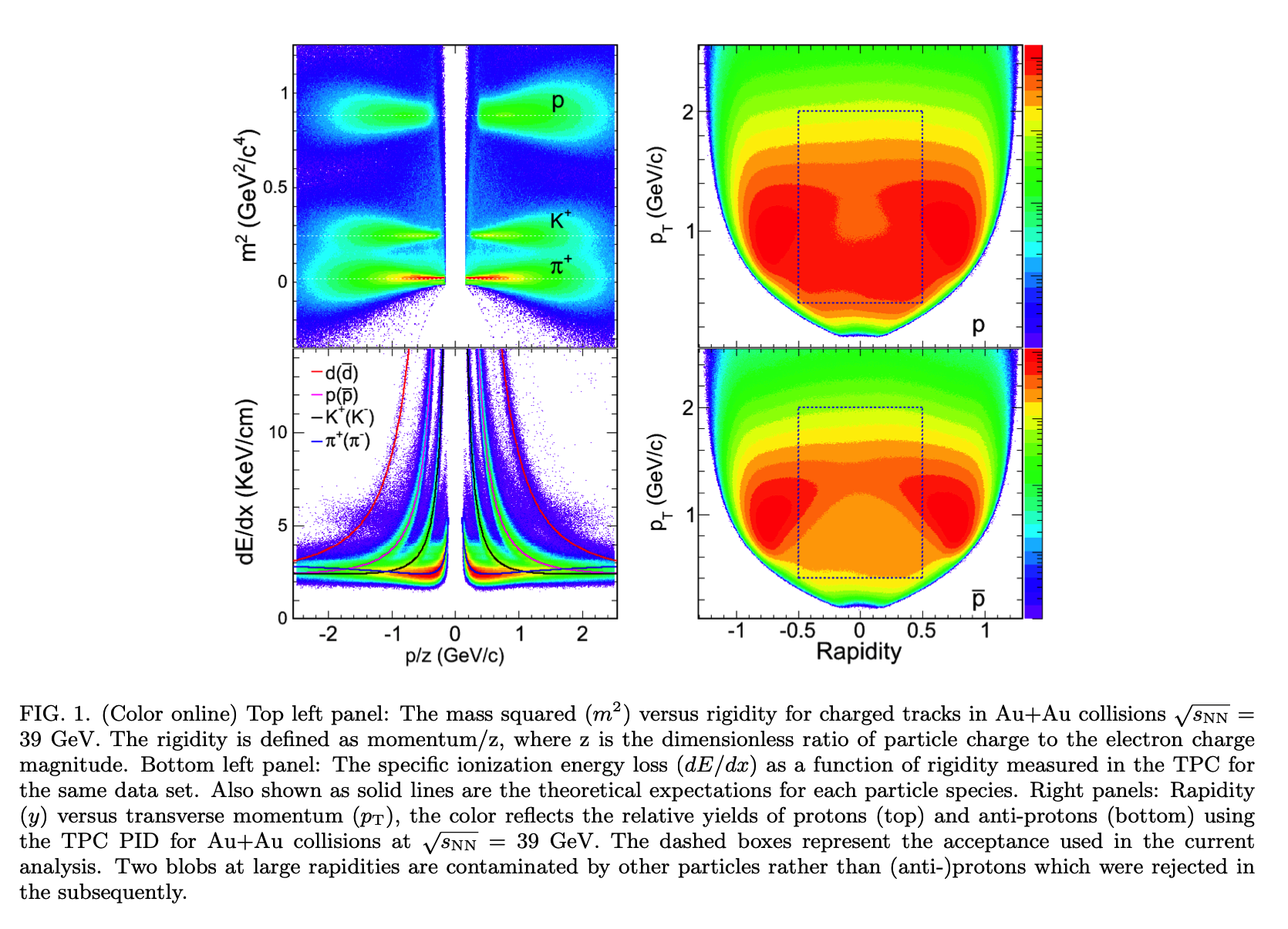
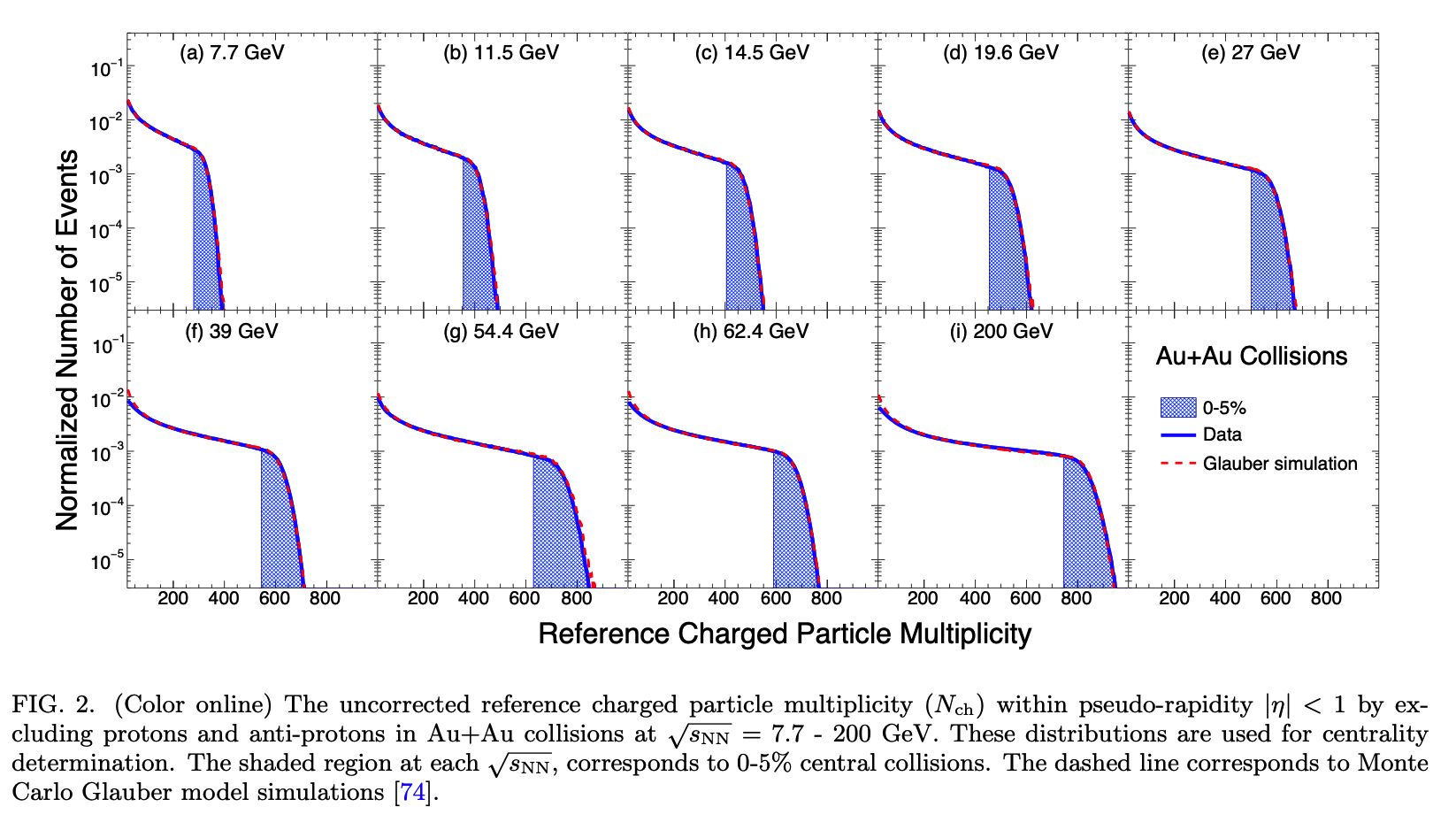
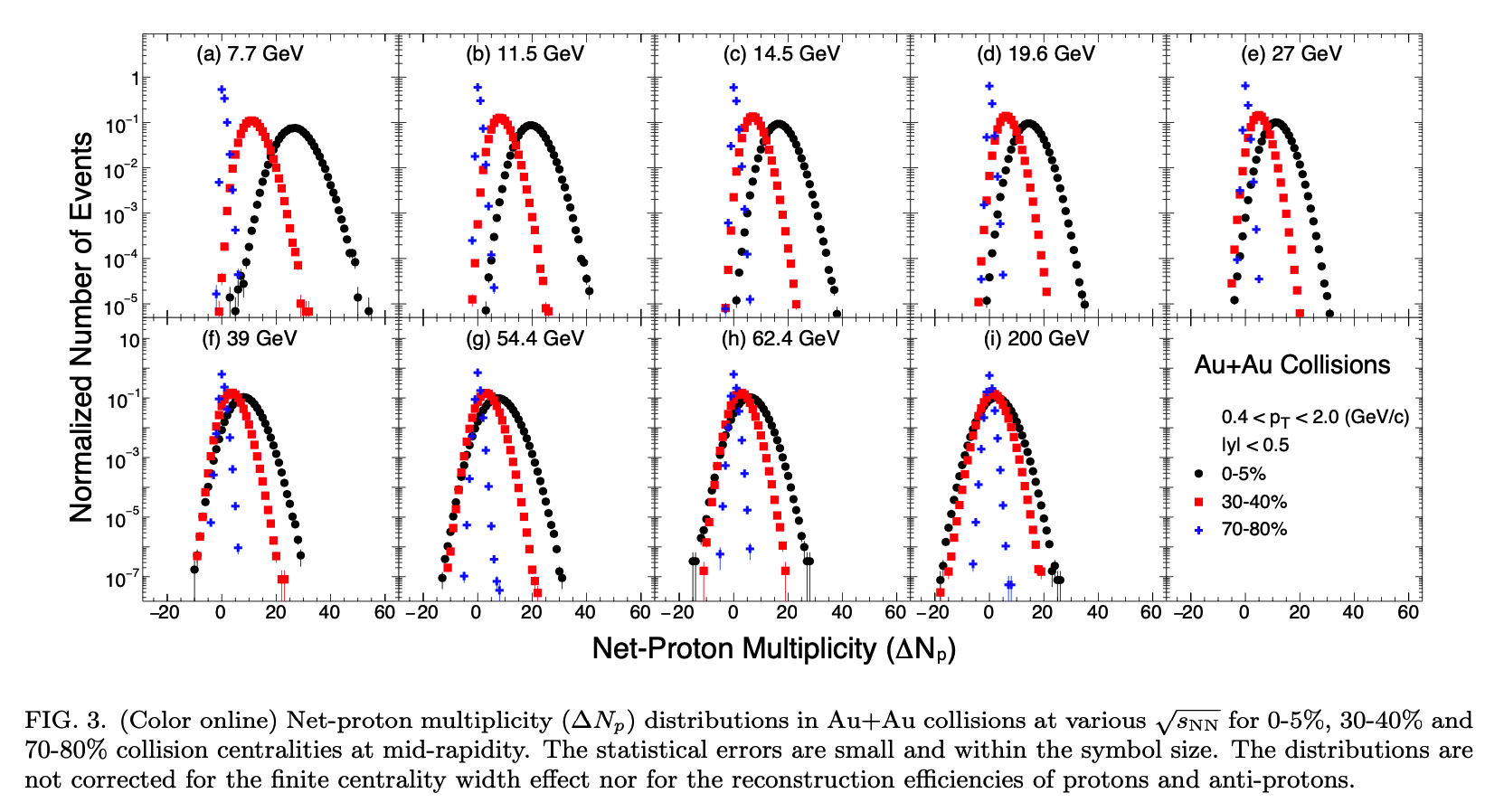
.png)
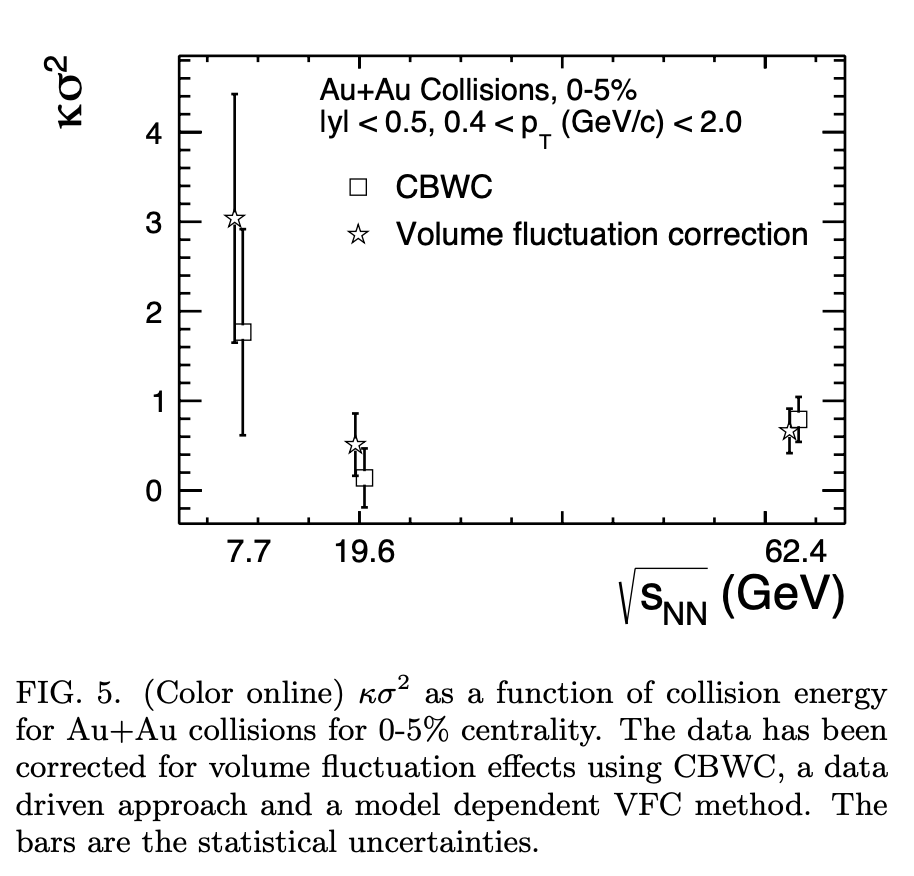
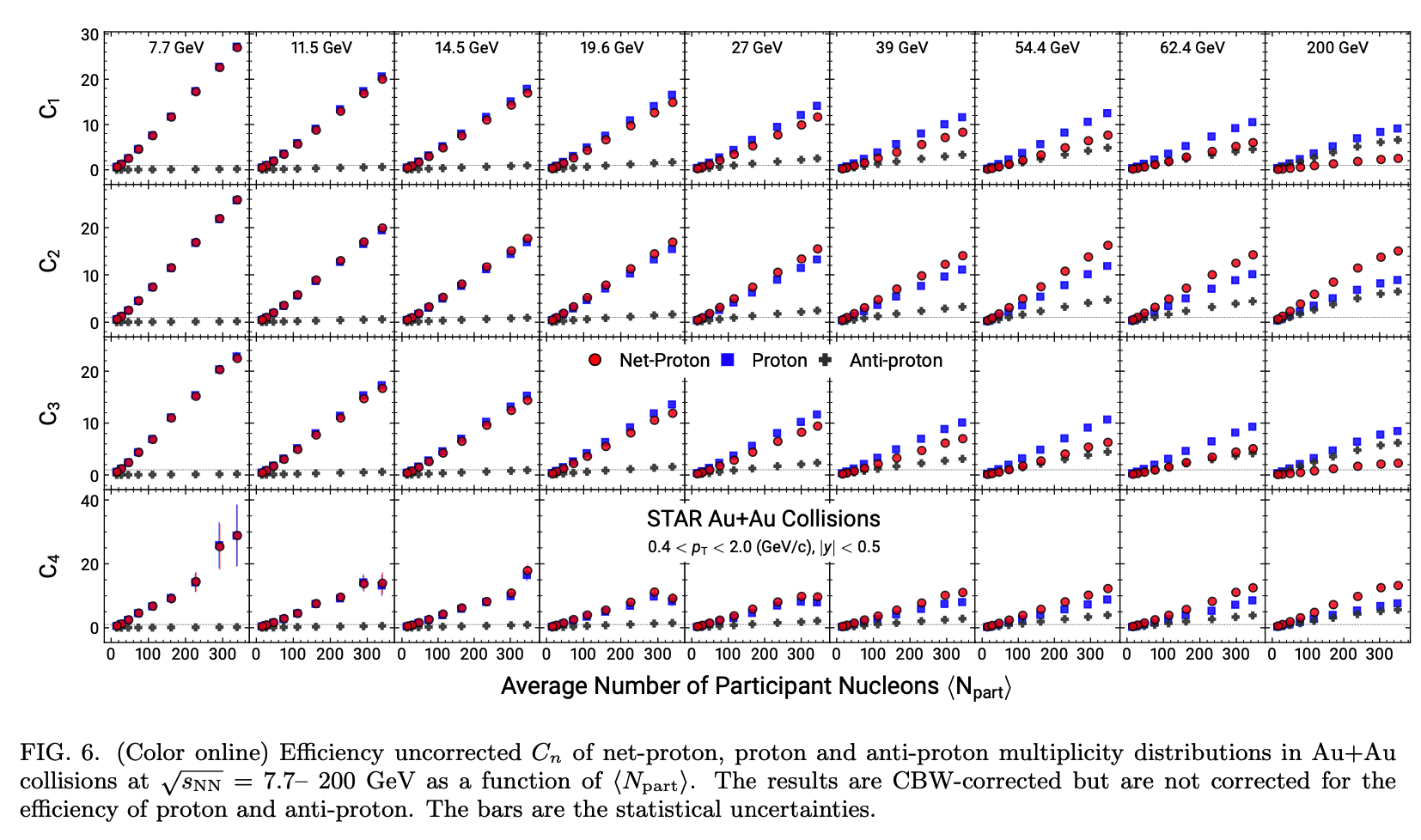


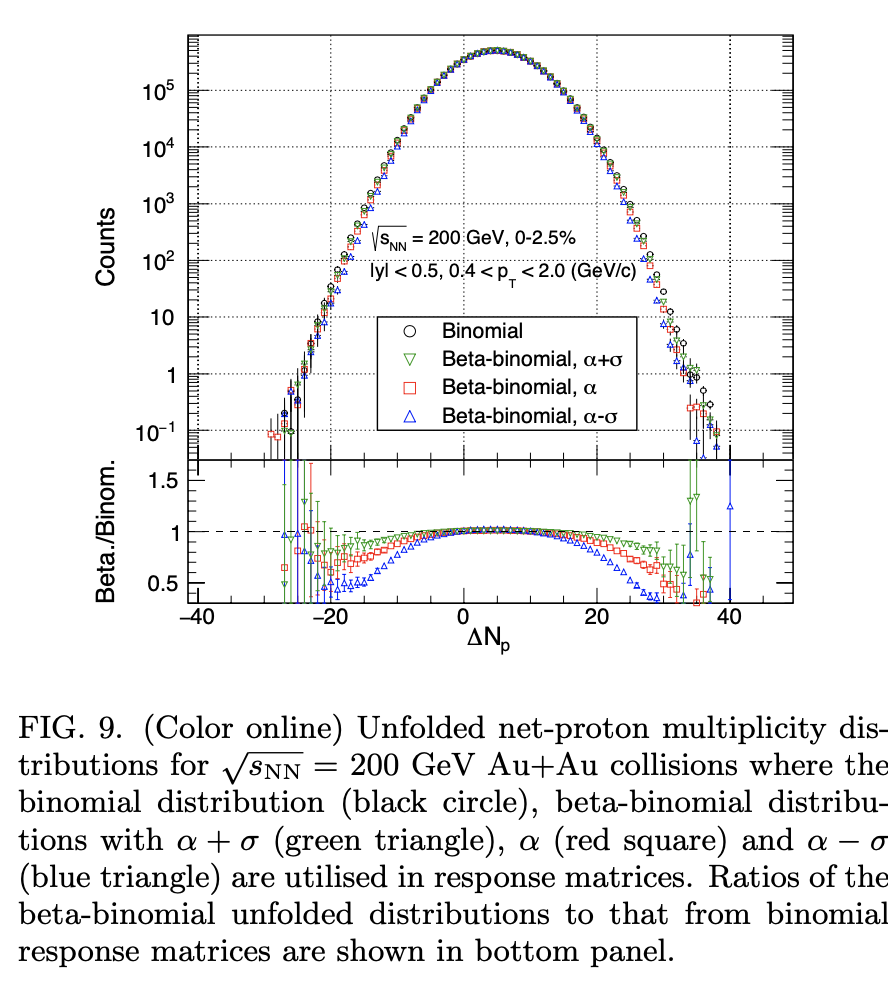
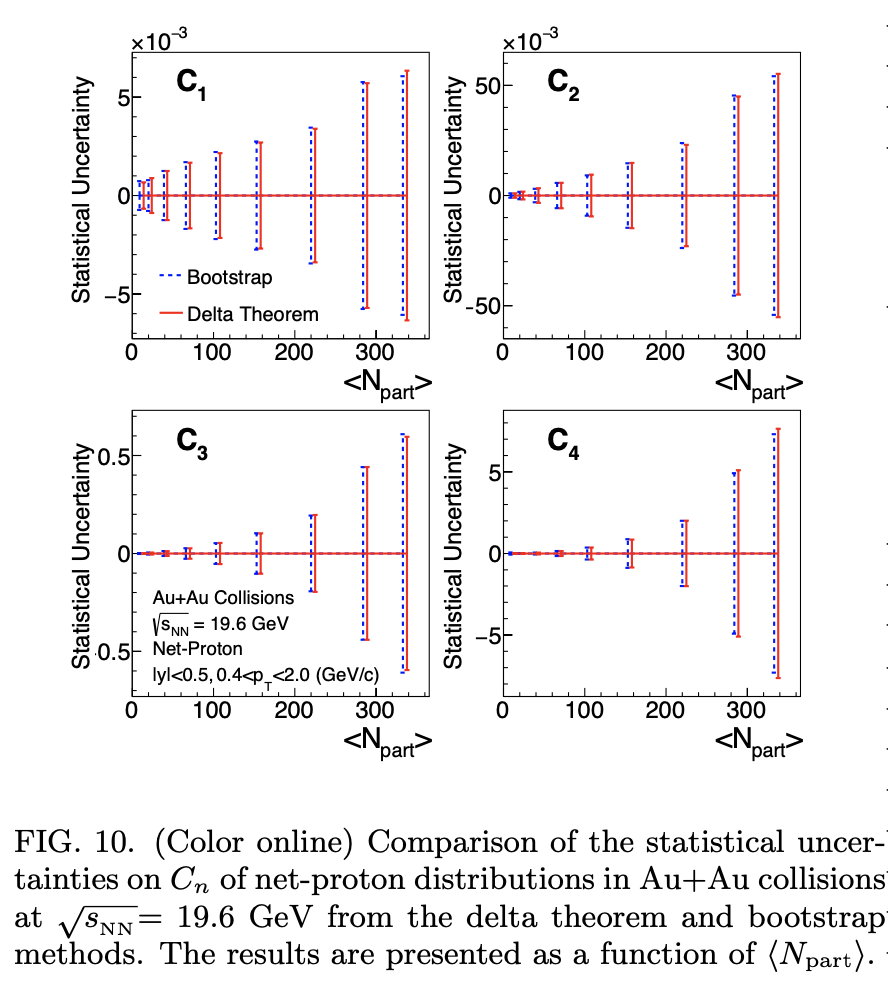
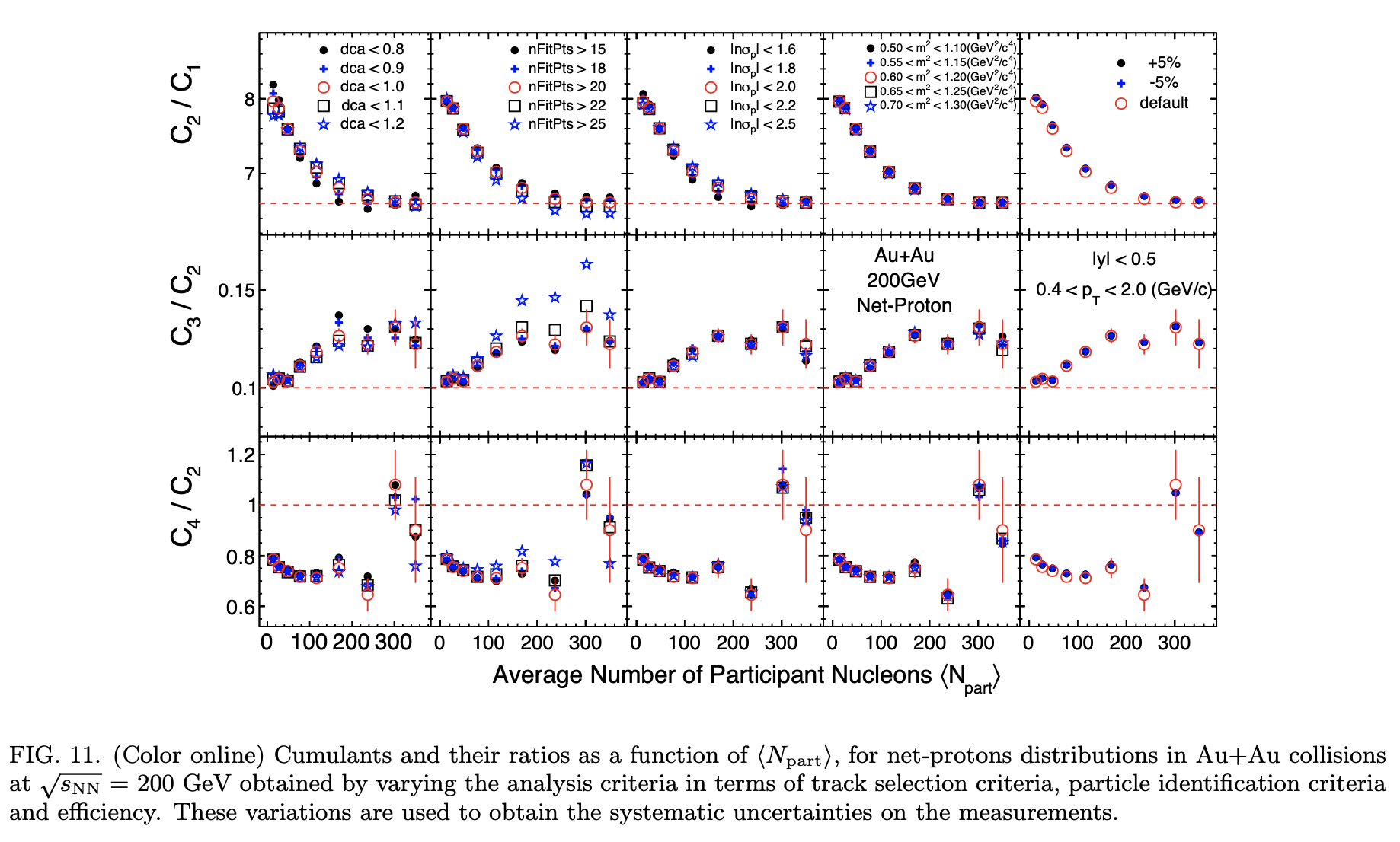
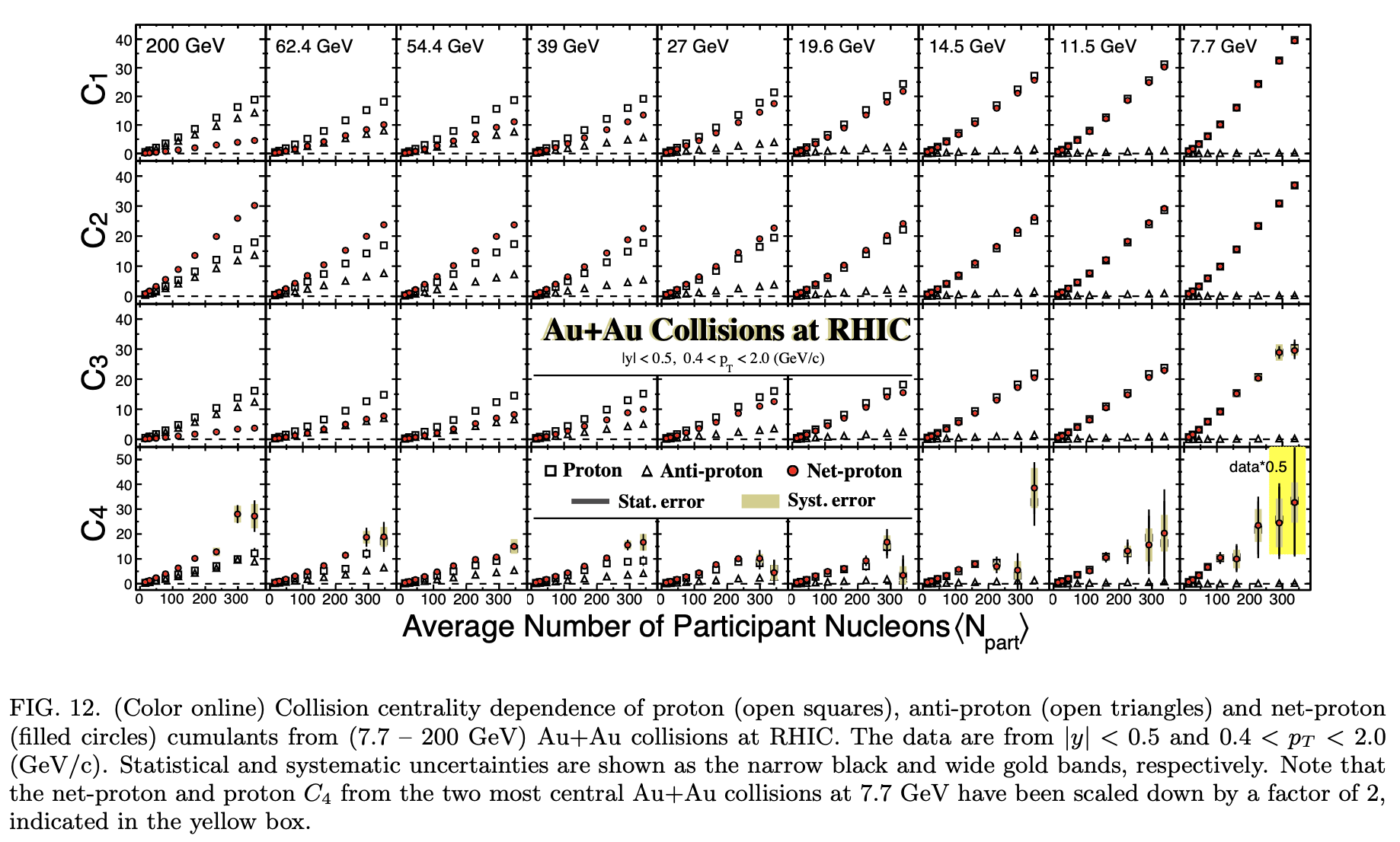
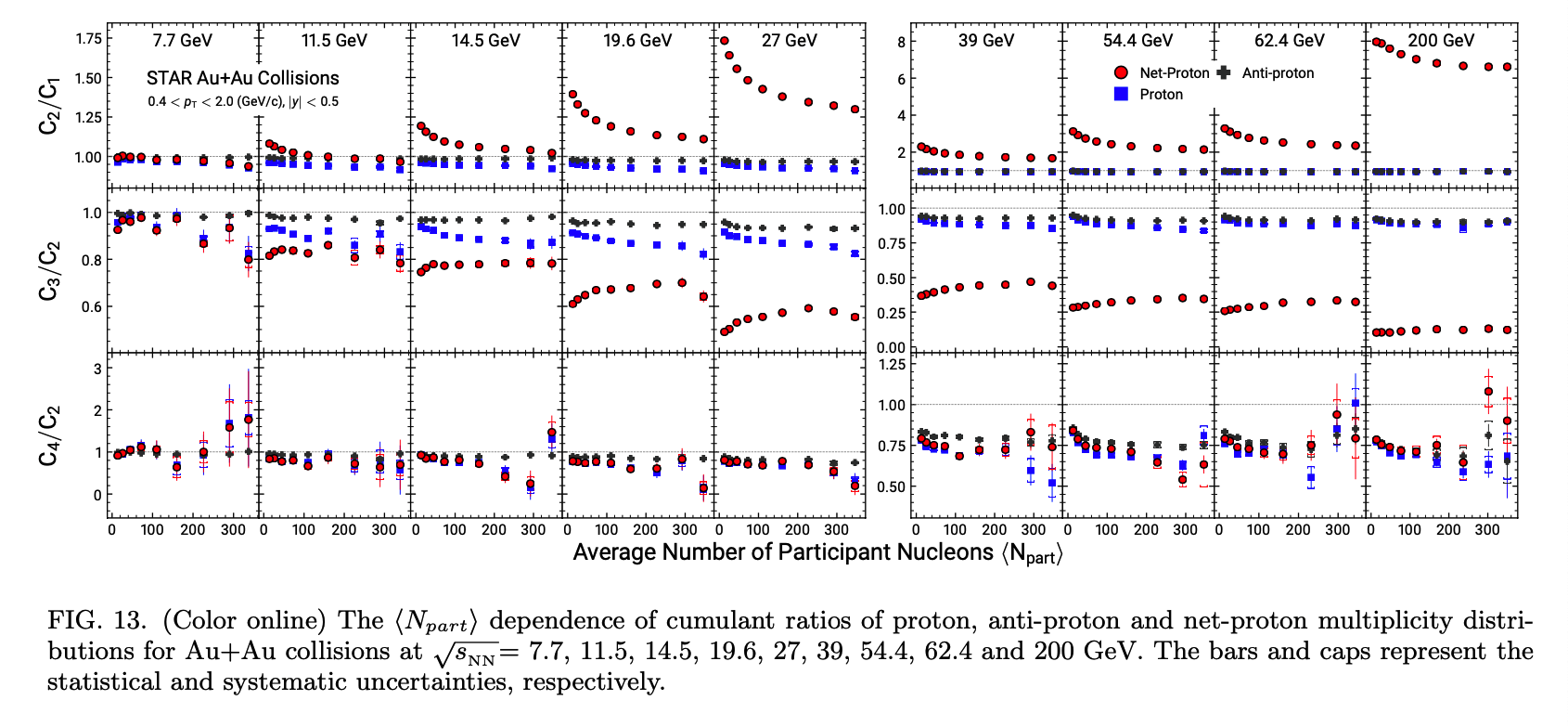
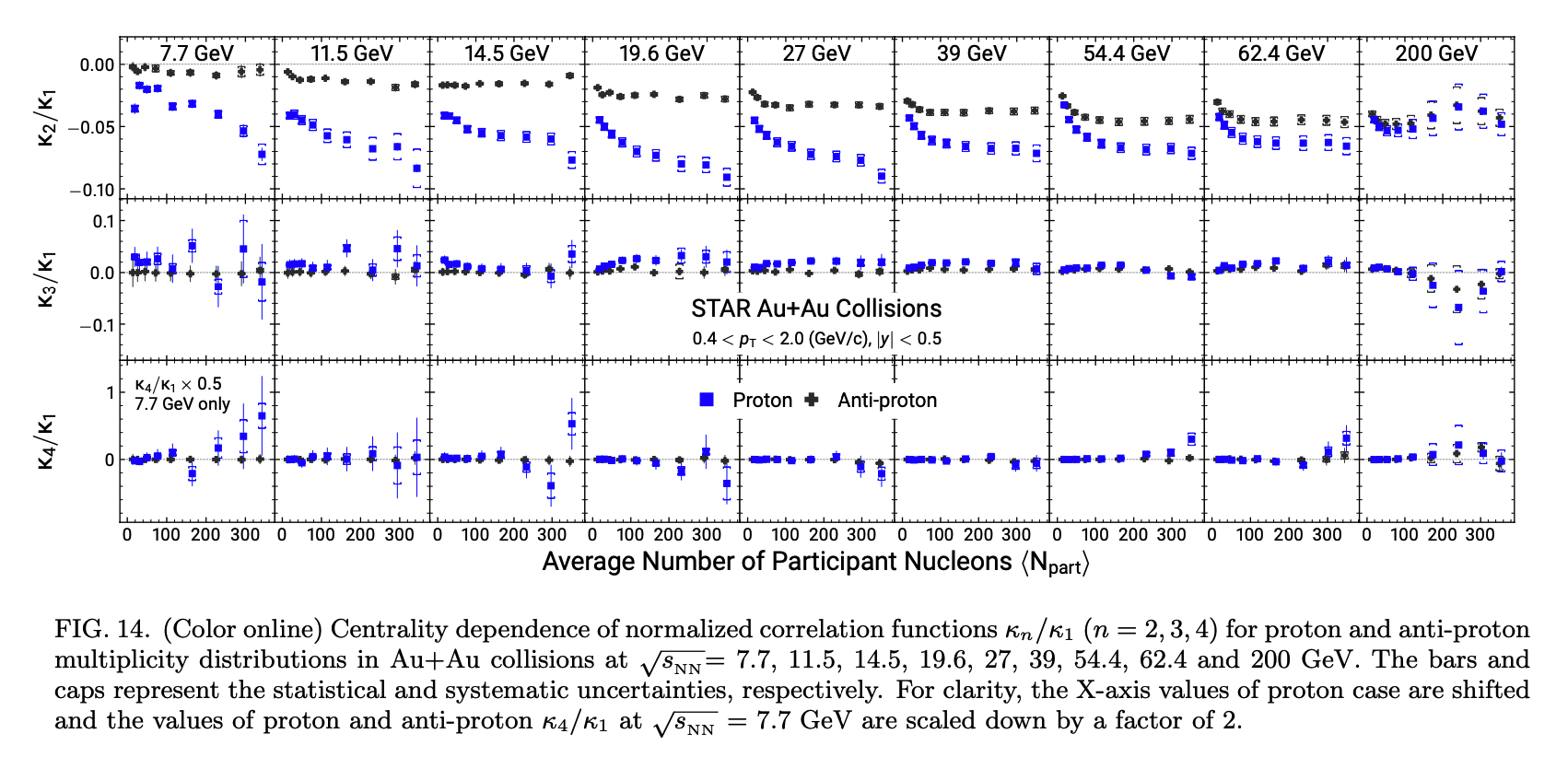
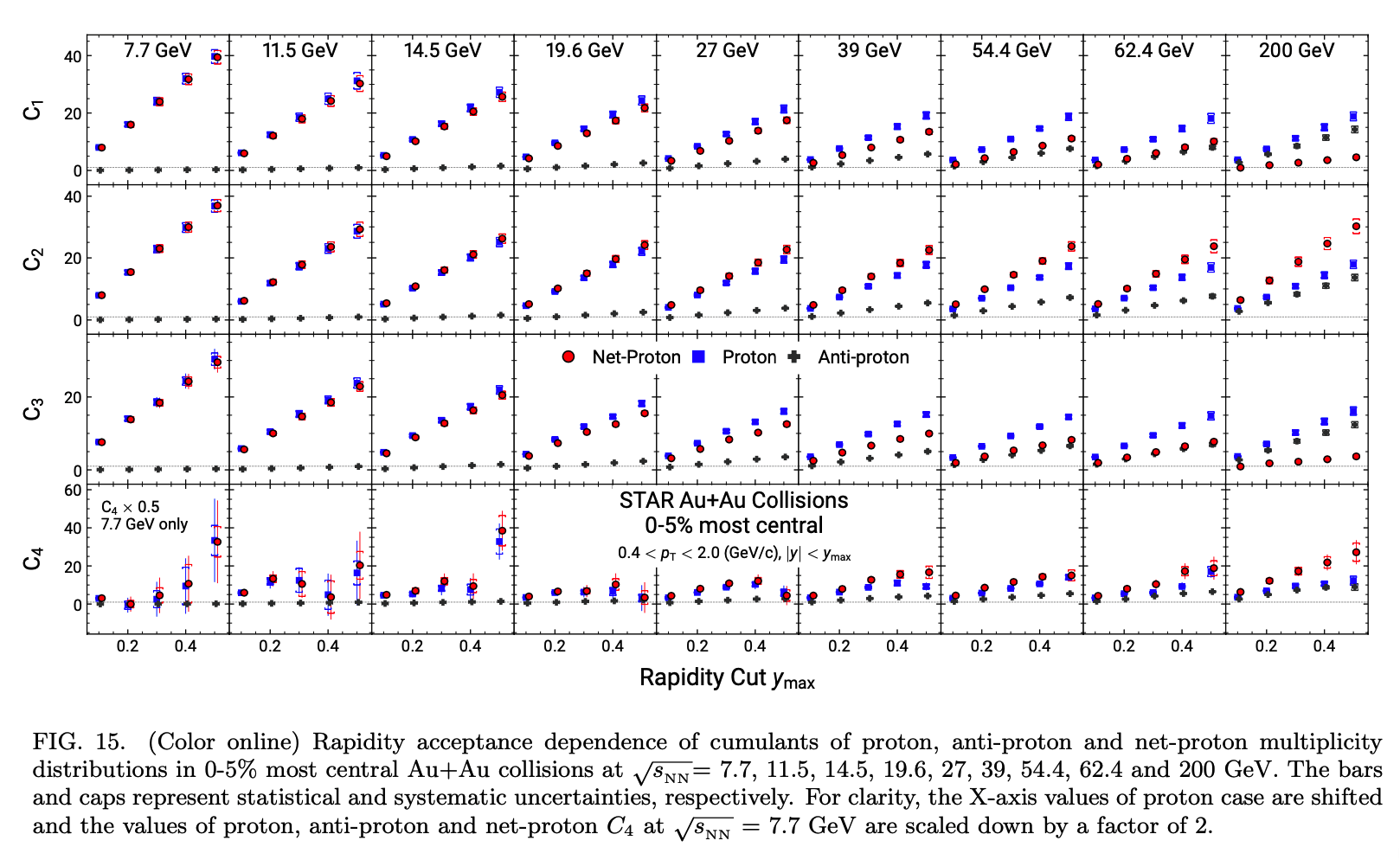
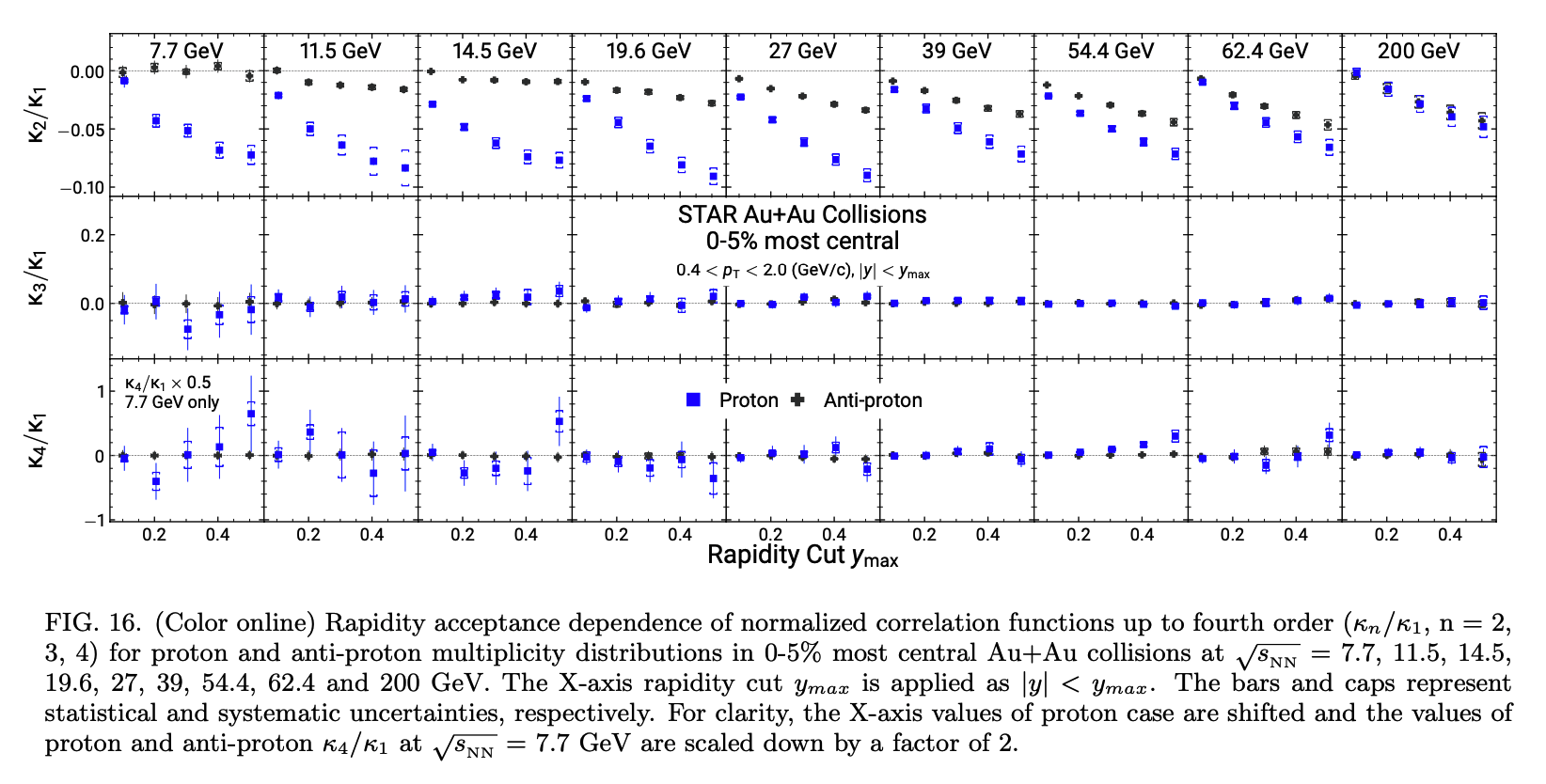
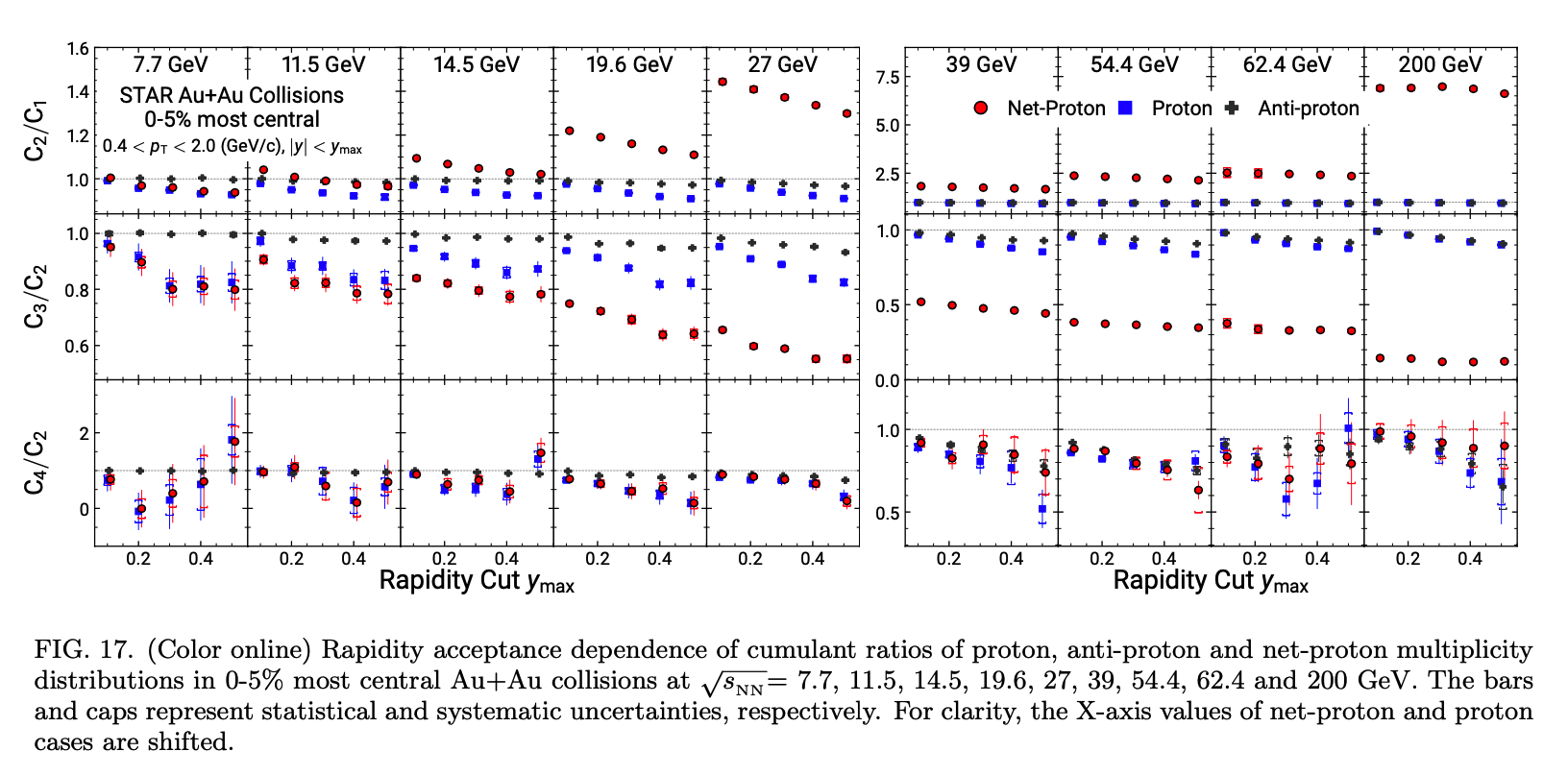
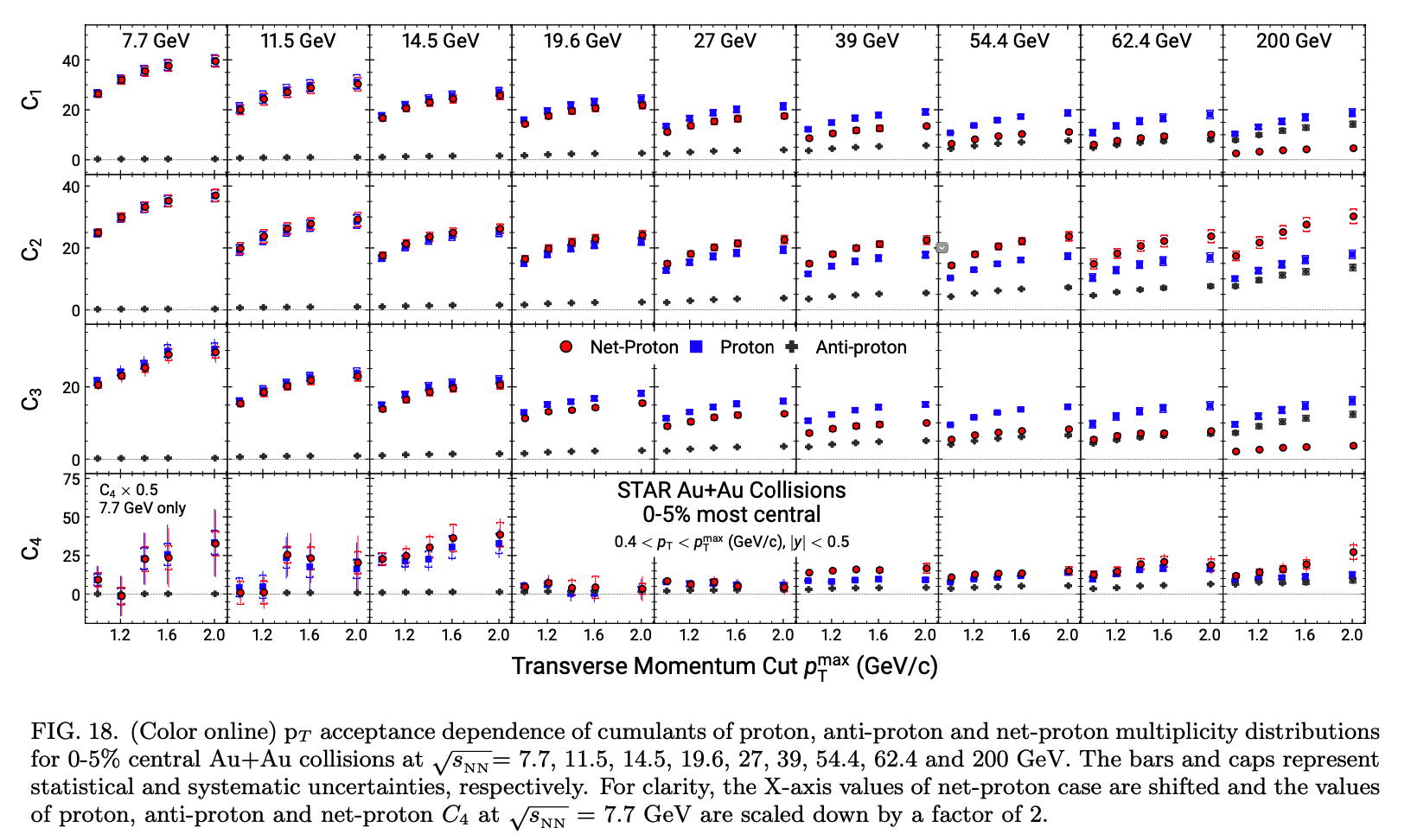
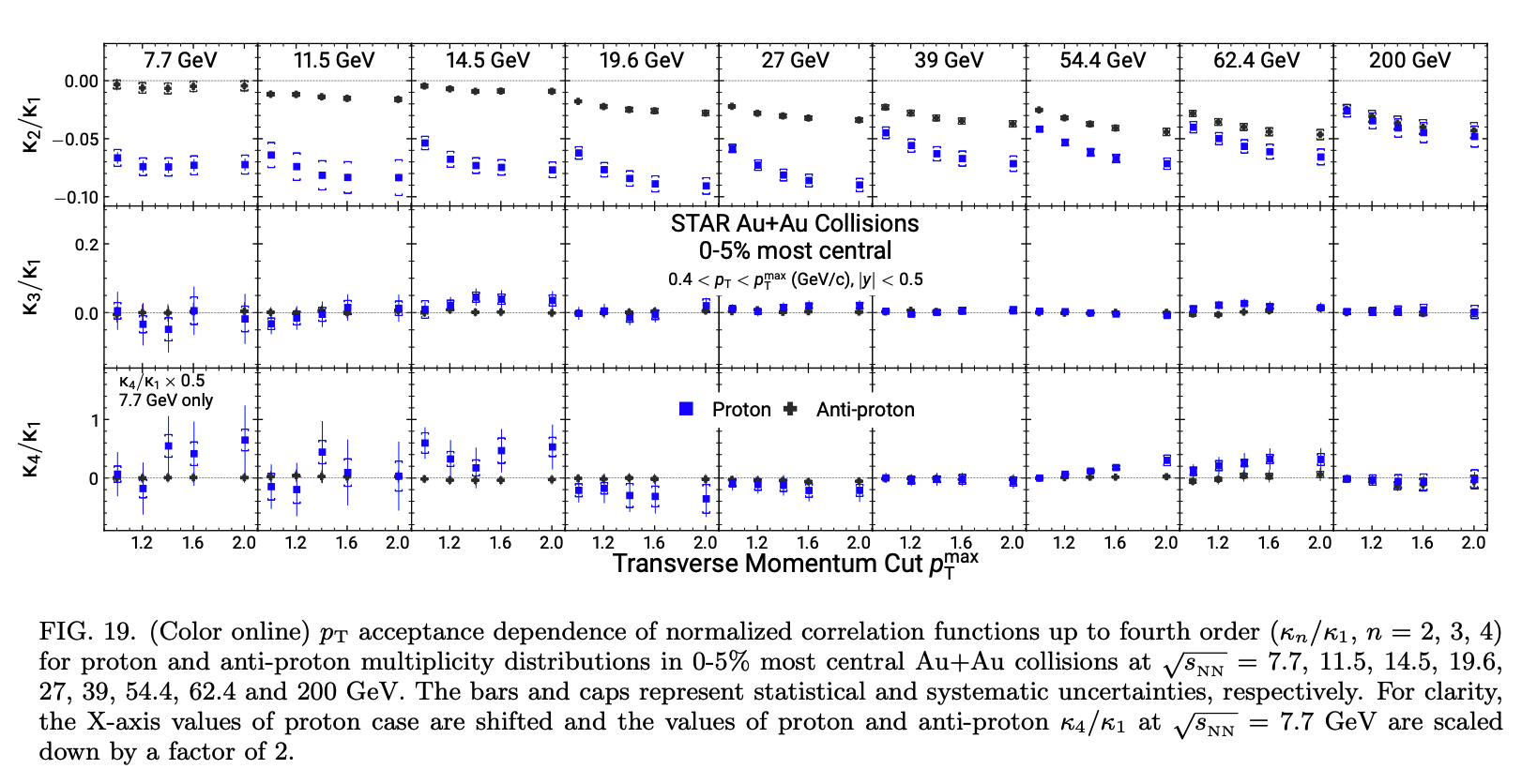
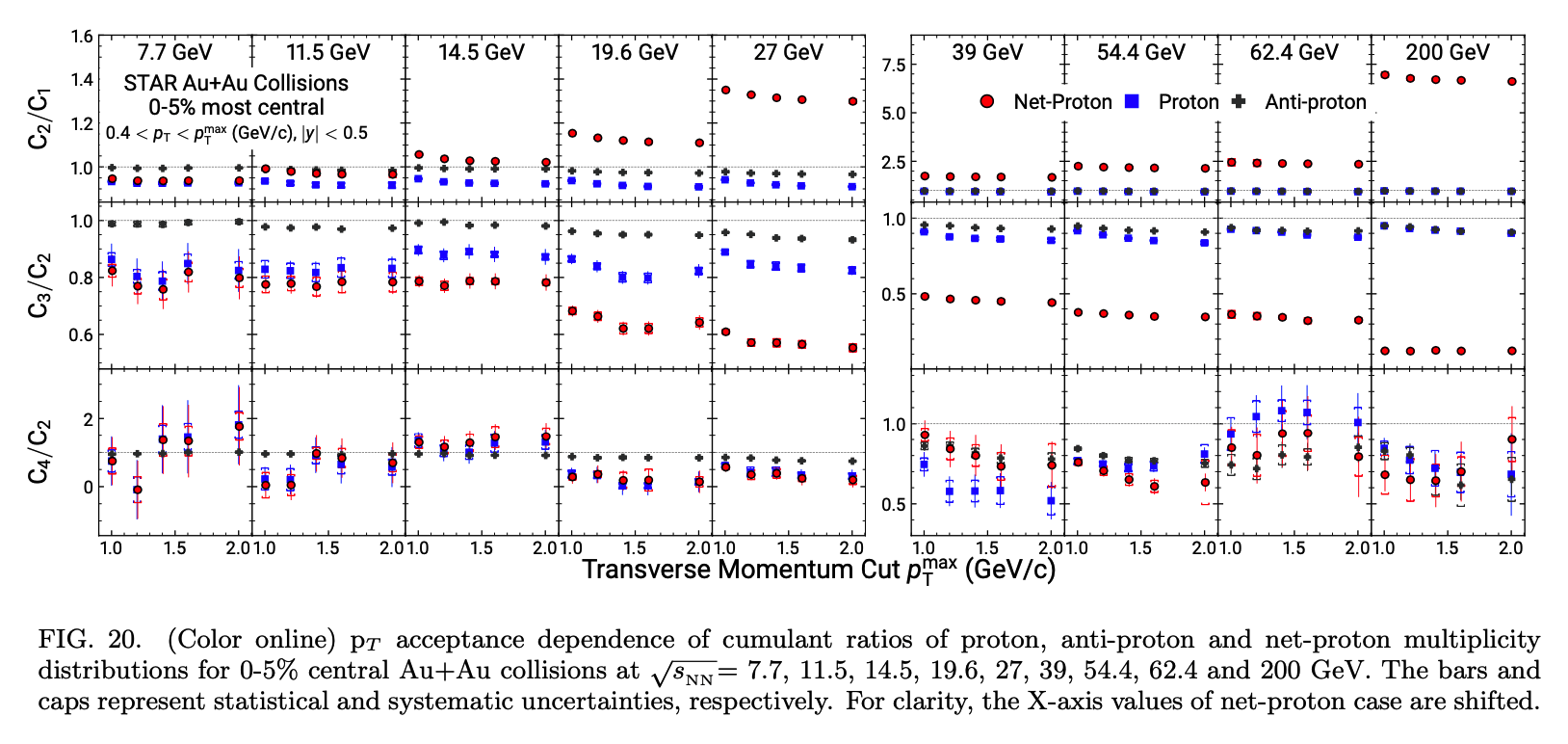
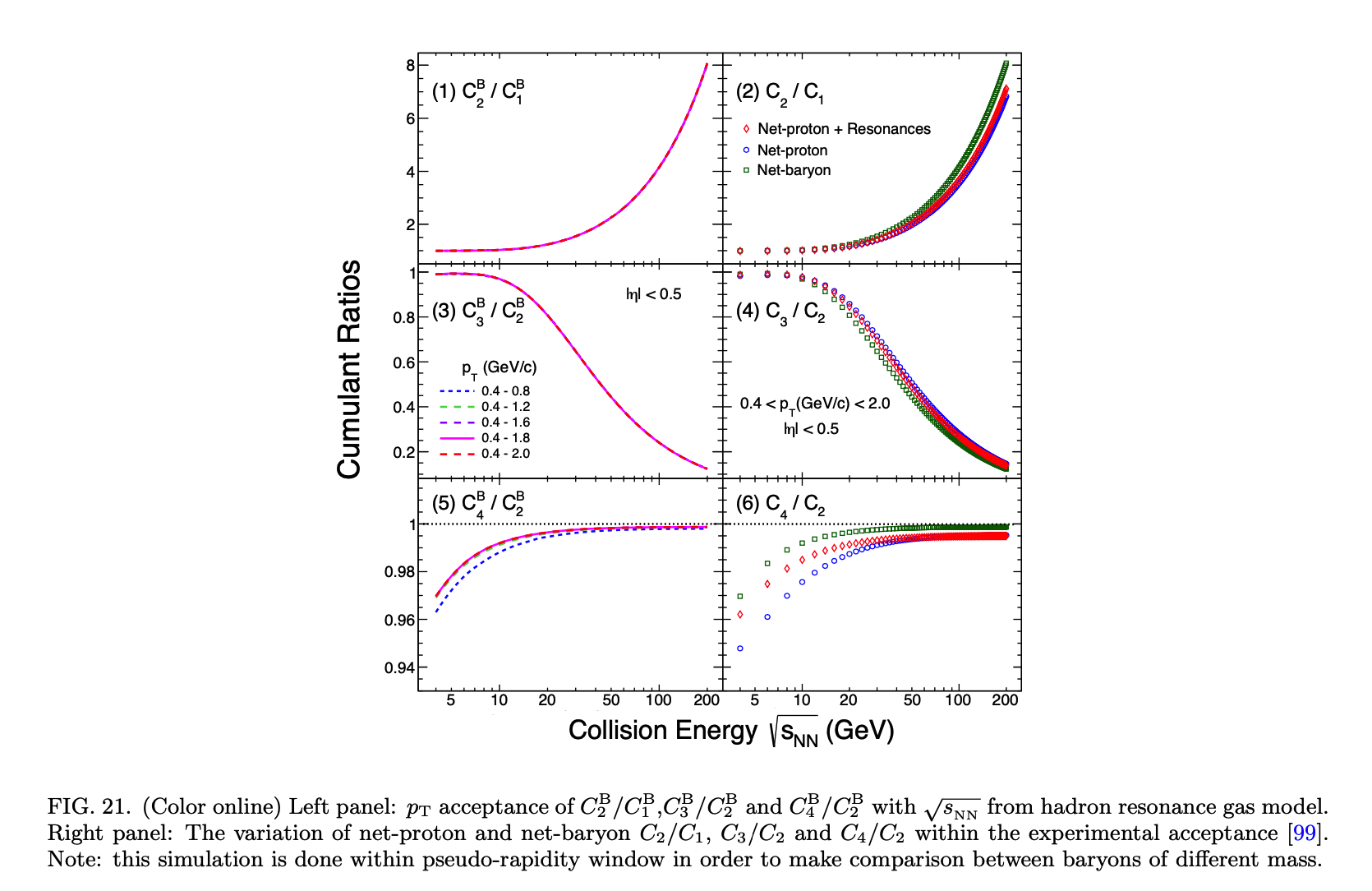
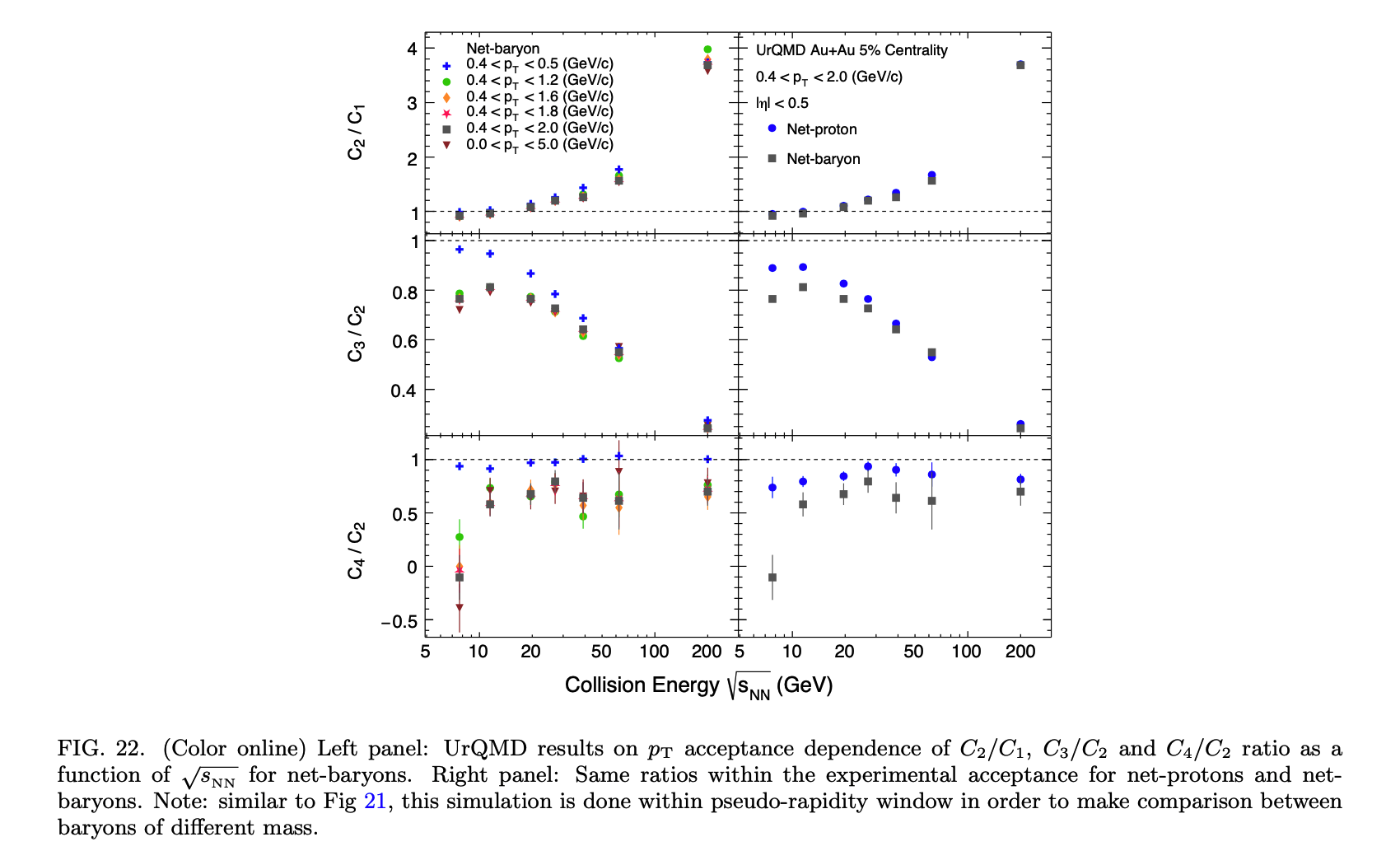
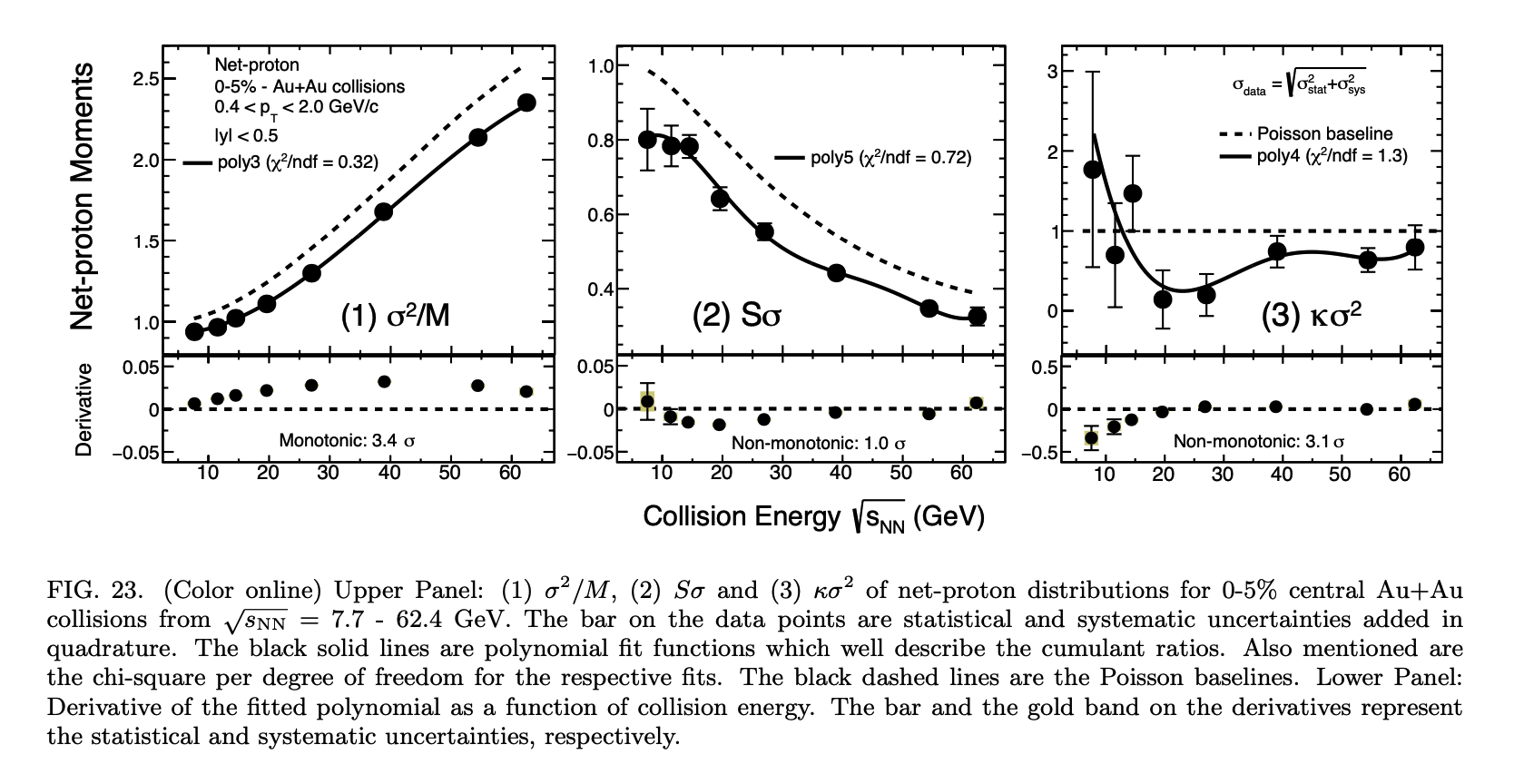
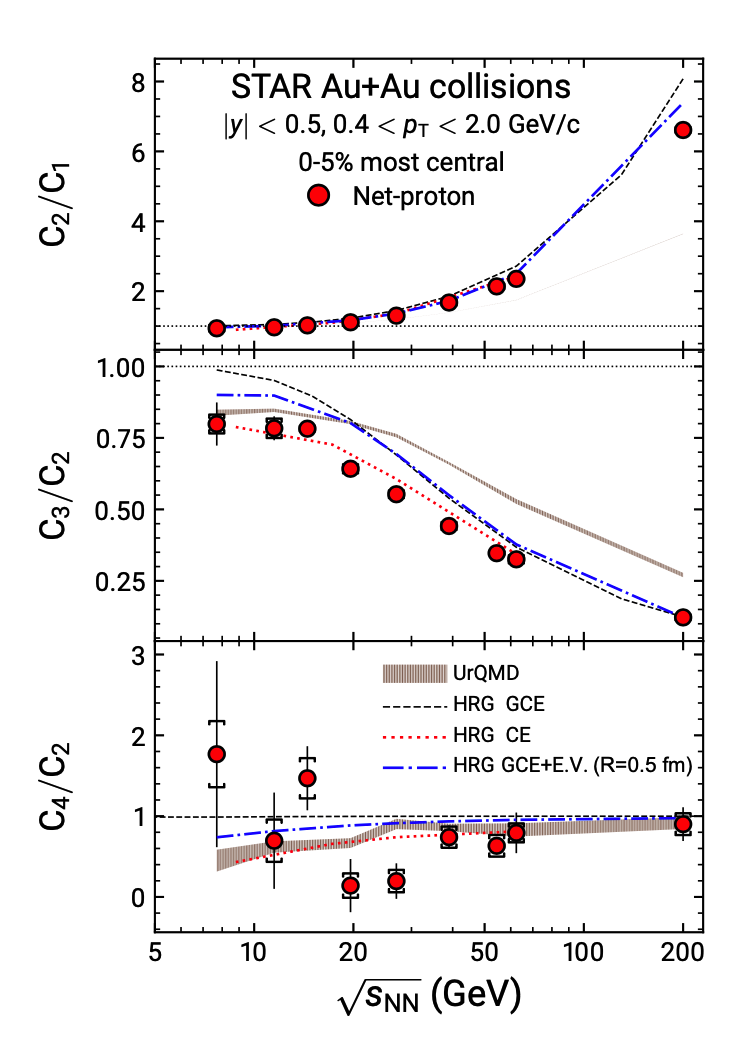
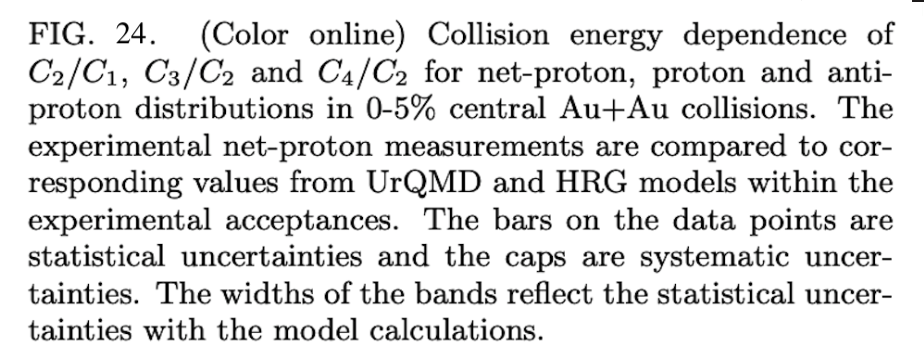
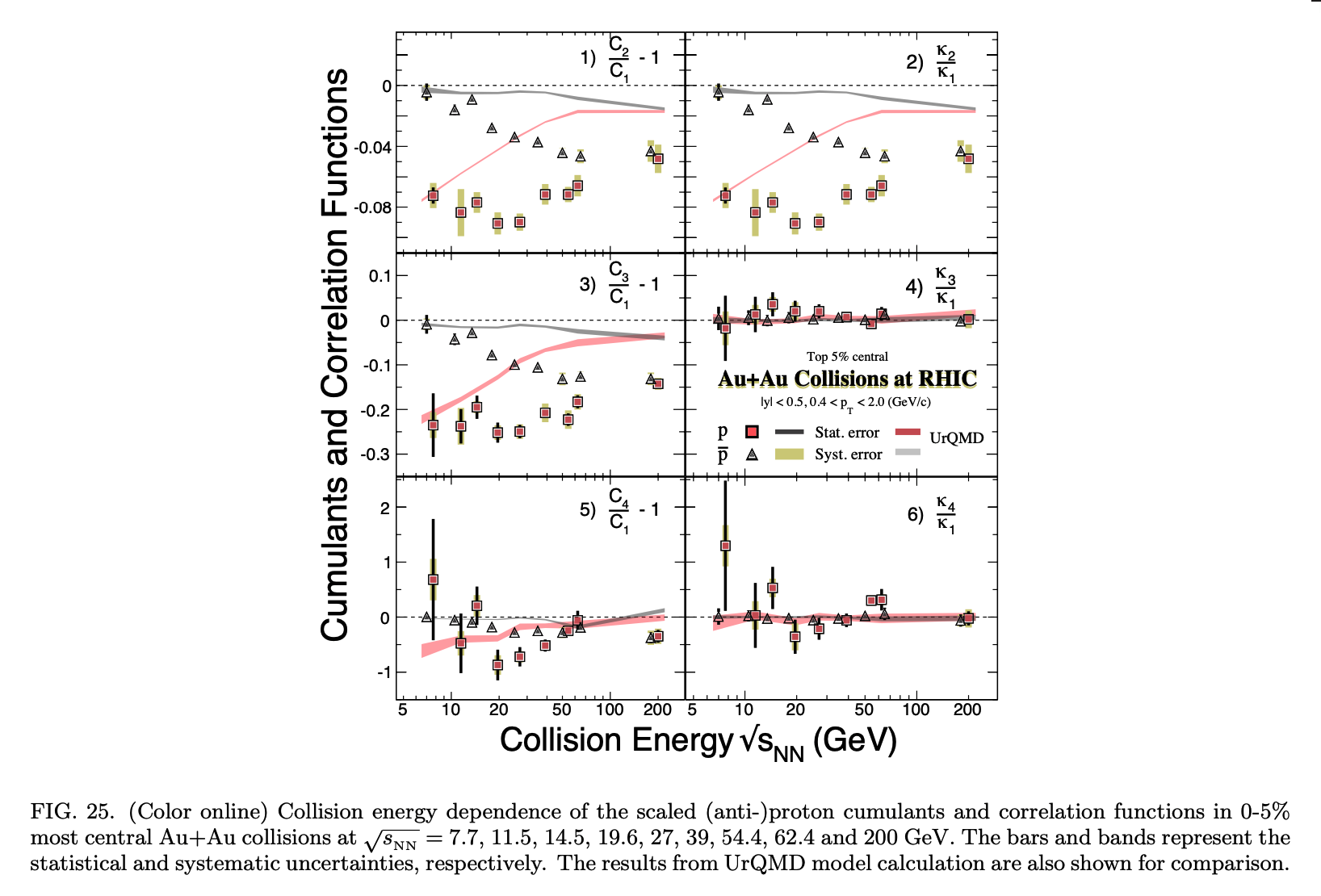
Summary and Outlook:
In summary, we report a systematic study of the cumulants of the net-proton, proton and anti-proton multiplicity distributions from Au+Au collisions at $\sqrt{s_\mathrm{NN}}$ = 7.7 - 200 GeV. The data have been collected with the STAR experiment in the first phase of the RHIC beam energy scan acquired over the period of 2010 - 2017. The energy, centrality and acceptance dependence of the correlation functions of protons and anti-protons are presented in this paper. Both cumulants and correlation functions up to fourth order at mid-rapidity ($|y|$$<$ 0.5) within 0.4 $<$ $p_{\mathrm T}$ $<$ 2.0 GeV/$c$ in Au+Au collisions are presented to search for the signatures of a critical point and/or a first order phase transition over a broad region of baryon chemical potential. The protons and anti-protons are identified with greater than 97\% purity using the TPC and TOF detectors of STAR. The centrality selection is based on mid-rapidity pions and kaons only to avoid self correlation effects. The maximum-allowed rapidity acceptance around mid-rapidity has been used for centrality determination to minimize the effect of centrality resolution. The variation of the average number of protons and anti-protons in a given centrality bin has been accounted for by applying a centrality bin-width correction, which also minimizes volume fluctuation effects. The cumulants are corrected for the proton and anti-proton reconstruction efficiencies using a binomial response function. Study of the unfolding technique for efficiency correction of cumulants has shown that, even in the 0-5\% central Au+Au collisions at \snn\ = 200 GeV, the case with the highest multiplicity, the results are consistent with the commonly-used binomial approach within current statistical uncertainties. The statistical errors on the cumulants are based on the delta theorem method and are shown to be consistent with those obtained by the bootstrap method. A detailed estimate of the systematic uncertainties is also presented. Results on cumulant ratios from different variants of the HRG and the UrQMD model are presented to understand the effects of experimental acceptance, resonance decay, baryon number conservation, and net-proton versus net-baryon analysis. The cumulant ratios show a centrality and energy dependence, which are neither reproduced by purely hadronic transport-based UrQMD model calculations, nor by different variants of the hadron resonance gas model. Specifically the net-proton $C_{4}$/$C_{2}$ ratio for 0-5\% central Au+Au collisions shows a non-monotonic variation with {\snn}, with a significance of 3.1 $\sigma$. This is consistent with the expectations of critical fluctuations in a QCD-inspired model. A $\chi^{2}$ test has been applied to quantify the level of agreement between experimental data and model calculations. The resulting $p$-values suggest that the models fail to explain the 0-5\% Au+Au collision data at \snn\ $\le$ 27 GeV. The $y$ and $p_{\mathrm T}$ acceptance dependence of the cumulants and their ratios provide valuable data to understand fluctuations~\cite{Ling:2015yau,Brewer:2018abr}. It will provide information on the range of the correlations and their relation to the acceptance of the detector. Furthermore, the systematic analysis presented here can be used to constrain the freeze-out conditions in high-energy heavy-ion collisions using QCD-based approaches, and to understand the nature of thermalization in such collisions~\cite{Bazavov:2012vg,Borsanyi:2013hza,Gupta:2020pjd}. From the analysis of multi-particle correlation functions, one observes significant negative values for $\kappa_2$ of protons and anti-protons, which are mainly due to the effects of baryon number conservation in heavy-ion collisions. The values of $\kappa_3$ of protons and anti-protons are consistent with zero for all of the collision energies studied. Further, the energy dependence trend of proton $C_{4}$/$C_{1}$ below 19.6 GeV cannot be solely understood by the negative values of $\kappa_2$ for protons, and the four-particle correlation function of protons ($\kappa_4$) is found to play a role, which needs to be confirmed with the high statistics data taken in RHIC BES-II, which began data-taking in 2018. Upgrades to the STAR detector system have significantly improved the quality of the measurements~\cite{bes2}. Primarily the goal of BES-II is to make high-statistics measurements, with extended kinematic range in rapidity and transverse momentum for the measurements discussed in this paper. The extended kinematic range in rapidity and transverse momentum are brought about by upgrading the inner TPC (iTPC) to extend the measurement coverage to $|\eta| <$ 1.5, the $p_{\mathrm T}$ acceptance down to 100 MeV/$c$ and improved $dE/dx$ resolution. Particle identification capability will be extended to -1.6 $< \eta <$ 1.0 with the addition of an endcap TOF (eTOF) detector. The collected event statistics to date, along with the goal for 2021, are listed in Table~\ref{table_bes2}.
===========================================
- yangzz's blog
- Login or register to post comments
